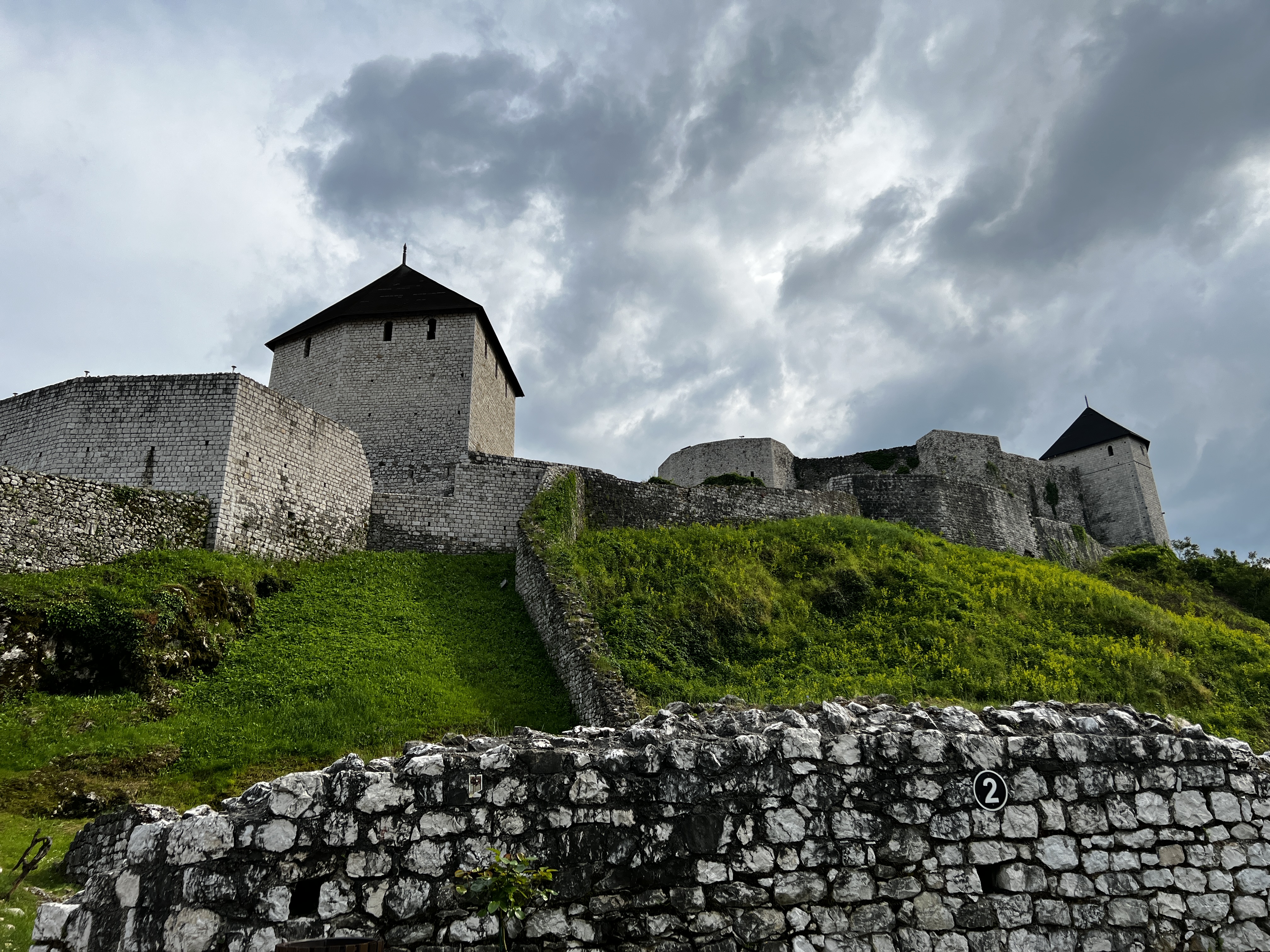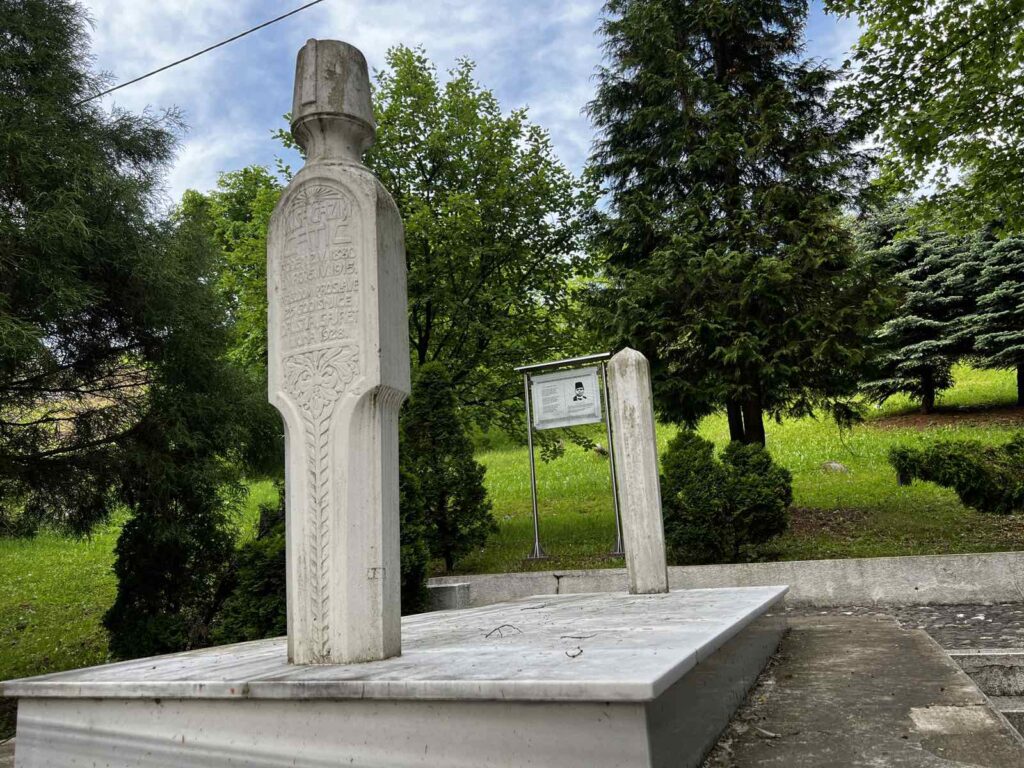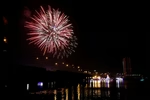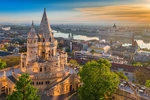
You will never go to Tesanj by accident, because you don't pass through Tesanj, you come to that town on purpose. And when someone mentions Tesanj, many will think about where it is and think about water and agriculture. And that is not the only wealth of this place nestled among the hills along the Tesanjka River.
When you set foot in Tesnja, your gaze will stop at the fortress ramparts. Gradina, as the locals call it, is the first to greet those who come, towering protectively over the city.
The Tesanj fortress is one of the largest ones in Bosnia and Herzegovina. You won't be able to just look and pass by her, she invites you to come in and greet her, and take a peek at the beauty she hides within her walls.
On the way through the bazaar, you can easily reach the fortress and already at the entrance you realize that the people are also the wealth of Tesnja. Everyone is greeted by friendly, smiling people with the desire to tell as much as possible and for you to learn as much as possible about the beauty and history of their city.
Along with the symbolic ticket price, which is also a Tesnja postcard, the kind gentleman at the ticket office tells where to move around the fortress, what to pay attention to, and at the same time calls a colleague to wait for the guests to tour the fortress and reach the Eminagic house.
And the imposing fortress reveals itself before you and proudly speaks of its existence.
A fortress that bears witness to history
It was built on a steep cliff above the Tesanjka River. There is no reliable information on who started the construction, it is assumed that they were Illyrians, but it is known that it was abandoned and neglected in 1840. Today it’s not neglected.
Neat, beautiful and imposing on an area of 6,296 square meters, it boasts the Kapetan’s and Dizdar's towers, cannon turrets, as well as tunnels, dormitories, casemates... It testifies that it is the only one that Eugene of Savoy did not manage to conquer on his way in his campaign to Bosnia in 1697.
He attacked Tesanj with a thousand infantrymen and six horsemen. He unsuccessfully tried to conquer the city for two days and after firing hundreds of shells, he destroyed Tesanj, then raised the siege and left.

Visitors learn about all that history through permanent exhibitions in the towers and casemates of the fortress. The Tesanj Museum's permanent exhibition teaches about the city itself through centuries, and among the exhibits, there are many different tools, sabres, Hebrew manuscripts, a collection of Sufi qasidas, seals, and there is also a numismatic exhibition - coins from the Roman Empire, the Middle Ages, the Ottoman Empire, the Austro-Hungarian Empire and the modern era; as well as charters, letters and seals of Bosnian rulers.


Even today, the fortress is being excavated and renovated, and its walls offer a beautiful view of the Eminagic house, which, in addition to all the houses in the bazaar, attracts one’s attention with its beauty and the view constantly stops at it.
A clock tower with a clock that is wound every day
But, before heading there, it’s impossible to pass by without stopping and admiring the clock tower which shows the exact time. And Tesanj residents will proudly say: "The Hojkurics made sure that the clock shows the exact time every day."
The Hojkuric family, which has been making sure that the clock on the clock tower is accurate for more than 130 years, also deserves a special story. But let's mention that Muhamed started it, then his son Abdullah, and then his grandson Adem. Not so long ago, Adem passed that tradition on to his son-in-law, Adnan Alic.
The clock tower is 18.5 meters high, and the clock needs to be wound every day.

On foot, not far from the fortress, is the Eminagic house. Friendly Sedin welcomes visitors, it’s not a problem for him to wait as long as necessary, because his wish is for as many people as possible to see the beauty of the bey's house.
Bey’s house is the pride of Tesnja
The Eminagic house is a traditional Bosnian house built in the 19th century. The so-called adobe house was built and lived in by the wealthy Eminagic family until 1970.
The basement of the house is made of stone and in the past, they used to store food there. Today, tools for tilling the soil are exhibited there, as well as objects that bear witness to the pottery craft of the Tesanje region. On the ground floor, there is a corridor and four living quarters. There is also a warehouse that served as a natural refrigerator in the past, and in the centre is an open warehouse where food was prepared, and the smoke went towards the roof and exited through six openings.
Today, the shoemaker's workshop of Tesanj shoemaker Hajrudin Mulalic is also on the ground floor. The first floor is reached by stairs on one side or the other, and only after climbing to the first floor do you see the spaciousness of the house.

There is a divankhana (a large anteroom) in which to sit, the bey's room, the flirt room, the girl's room, as well as the winter room.
Numerous objects bear witness to history, and Sedin talks about all of this while you observe the rooms and things and experience the house as it was once upon a time.

At the end of the 20th century, the Municipality of Tesanj bought the house and restored it thanks to the EU support project. The Eminagic House is a national monument of Bosnia and Herzegovina.
Next to Eminagic is Turalic's house, the one where the legendary TV series “Tale” was filmed. Today the house is privately owned.
Gazi Ferhad Bey Mosque - National Monument
Moving on, back towards the bazaar, one is drawn to Ferhadija, i.e. the old Gazi Ferhad-bey's - Carsi mosque. As stated in the endowments, i.e. Tesnja's identity card, Ferhad-beg built the mosque for God's servants who perform the prayer after idolatry. It was built between 1555 and 1558.
In its long history, the mosque has suffered several times, and it is known that it was set on fire during the campaign of Eugene of Savoy in 1697.

In 2017, the minaret of Ferhad Bey's mosque collapsed in a gust of strong storm and wind. It was the only stone minaret in Tesanj from the Ottoman period. Today, the minaret has been restored, the interior of the mosque has been decorated, and soon the Carsi Mosque (the Bazaar Mosque) will be reopened.

Ferhad Bey's mosque was declared a national monument of Bosnia and Herzegovina.
Churches bear witness to unity - Muslims also gave money for their construction and renovation
Tesanj is also proud of another national monument - the Church of Saints Peter and Paul. It is a Catholic church, and it also bears witness to the unity of this city, because, during the renovation, the last major reconstruction of the facade was financed by the BiH businessman, a Bosniak named Hasan Ahmetlic.
Tesanj is also proud of its Orthodox Church. Raised on a hill, it adorns the city. According to the yearbook of the Zvornik-Tuzla diocese, the history of the Tesanj Serbian Orthodox Church begins in 1923, when the old temple on Tepet was demolished due to sinking.

The very construction of the church, which began in 1934, was financed not only by Orthodox believers but also by their Muslim neighbours.
By 2000, one of the most valuable collections of icons in Bosnia and Herzegovina was located in the Church of the Intercession of the Holy Virgin. It is interesting that the collection of Tesanj icons was preserved during both previous wars thanks to the citizens and institutions of Tesanj. In 2000, by order of the then bishop of Zvornik-Tuzlan, Kacavenda, the icons were taken to Bijeljina for alleged restoration without the knowledge of representatives of the Serbian Orthodox church municipality of Tesanj and local authorities and were never returned.

Today, the church is waiting for the completion of interior works and painting, and the faithful hope that it will soon shine with its full glory.
And, when visiting the church, you will probably "get lost" before you get to it. However, ask the locals how to approach it, and after visiting the church they can also direct you to the grave of the renowned Bosnian writer Musa Cazim Catic.

Despite being born in Odzak, he lived in Tesanj for a period of his short life and was buried there. The tombstone was erected by members of the "Gajret" Cultural Association.
And that is just a part of the history that Tesanj is witnessing. A city that has as many as five national monuments: Gazi Ferhad-bey's mosque, Eminagic estate, the Catholic church of St. Peter and Paul, and the Old Town of Tesanj as an architectural entity as well as the building of the Grand Mufti's residence.
However, no one lives off the tourism of Tesanj, despite having a lot to offer. And if you think - why should we go to Tesanj out of so many beautiful places in Bosnia and Herzegovina, be sure that Tesanj is one of those beautiful places.
Kakvo je tvoje mišljenje o ovome?
Učestvuj u diskusiji ili pročitaj komentare





 Srbija
Srbija
 Hrvatska
Hrvatska
 Slovenija
Slovenija



























































